Picture waking up early on a winter morning. You switch on a lamp, and the room fills with light, chasing away the darkness.
You grab your phone to check the time, and its screen lights up, displaying vibrant colors. You step outside, and a car passes by, its headlights cutting through the fog.
All these everyday experiences involve light, an essential part of our lives. Light is more than just simple illumination. It is a complex work of electric and magnetic fields traveling through space.
I. Introduction to Electromagnetic Properties of Light
Light is electromagnetic radiation that consists of waves of electric and magnetic fields traveling through space. These waves carry energy and travel through a vacuum without needing a medium. Studying light's electromagnetic properties helps us understand a range of phenomena, from how we see colors to how we use light in technology.
II. Properties of Electromagnetic Waves
Electromagnetic waves have several key properties that define their behavior and impact. Understanding these properties helps us grasp how light works in different contexts.
Wavelength and Frequency
The wavelength of light refers to the distance between successive wave peaks. It is usually measured in nanometers (nm).
Frequency is the number of wave cycles that pass a point in one second. It is measured in Hertz (Hz).
These two properties are related. As the wavelength decreases, the frequency increases, and vice versa.
For example, visible light has wavelengths ranging from about 400 nm (violet) to 700 nm (red).
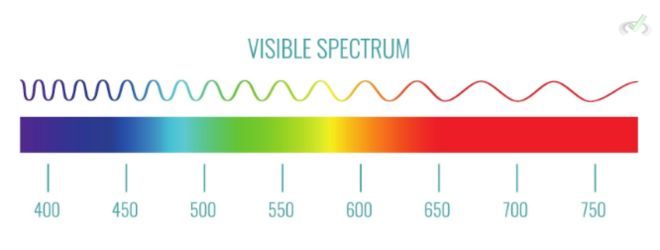
Speed of Light
Light travels at a great speed. This is approximately 300,000 kilometers per second (km/s) in a vacuum. This speed can change when light passes through different materials, like water or glass.
The change in speed can cause light to bend. This phenomenon is known as refraction. Snell's Law governs refraction:

Amplitude
The amplitude of a light wave is the height of the wave from its midpoint to its peak. This property is related to the intensity or brightness of the light.
Higher amplitude means brighter light. The wave's energy is also proportional to the square of the amplitude.
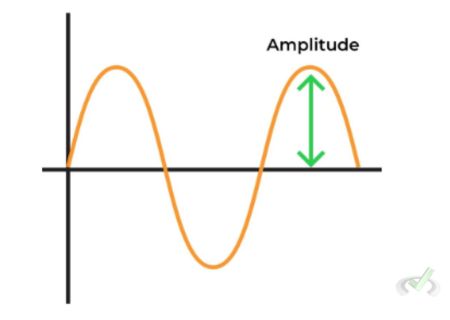
Polarization
The direction where the electric field of a light wave oscillates is known as polarization. Light waves can oscillate in many directions.
When light waves are restricted to oscillate in just one direction, they are polarized. Polarized sunglasses, for instance, reduce glare. It does this by blocking certain directions of light waves.
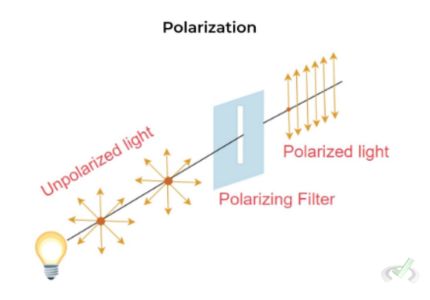
III. Behavior of Light
Light interacts with materials in various ways, explaining many everyday phenomena.
Reflection
Reflection happens when light hits a surface and bounces off. The angle at which light hits the surface (angle of incidence) is equal to the angle at which it reflects off the surface (angle of reflection). This principle, known as the law of reflection, is why we can see our reflection in a mirror.
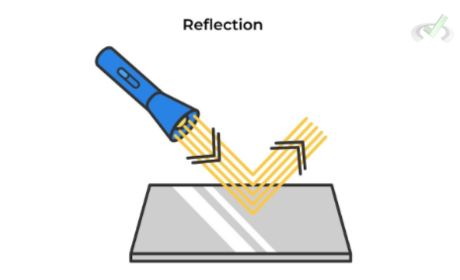
Refraction
Refraction is when light passes from one medium to another and changes speed, causing it to bend. A typical example is a pencil that appears bent when partially submerged in water.
The degree of bending depends on the material's refractive index. It measures how much a material can bend light.
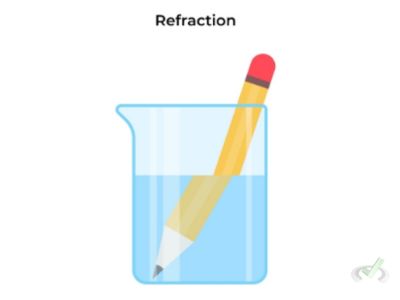
Diffraction
Diffraction refers to bending light around an obstacle’s edge or through a narrow opening. This property can create patterns of light and dark bands, known as interference patterns. Diffraction becomes more apparent when the obstacle or opening size is similar to the wavelength of light.
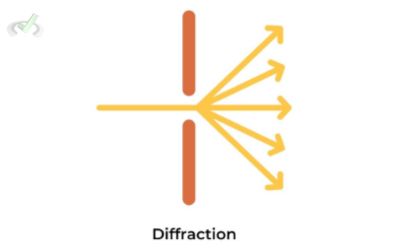
Interference
Interference happens when two or more light waves overlap and combine. Depending on how the waves align, the resulting light pattern can be brighter (constructive interference) or darker (destructive interference).
This principle is used in technologies like holography and scientific instruments to measure tiny distances. For example, when light waves from two sources meet, they can create a pattern of bright and dark spots.
Dispersion
Dispersion is the separation of light into its component colors. This happens because different wavelengths of light refract by different amounts.
A prism is a common tool for demonstrating dispersion. It splits white light into a spectrum of colors, which is why we see rainbows, as raindrops act like tiny prisms.
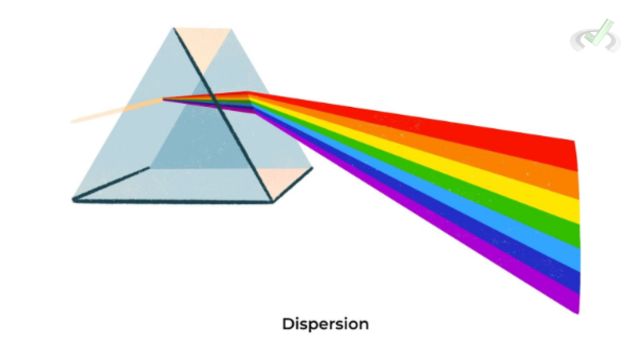
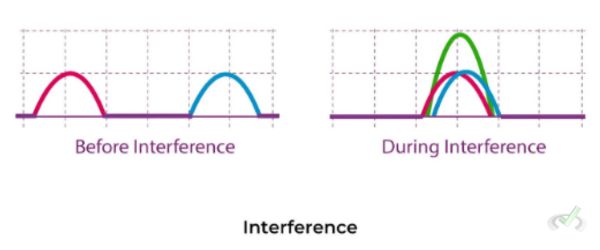
IV. Connecting Electromagnetic Properties of Light to Broader Scientific Concepts
Understanding light's electromagnetic properties can help us connect to other critical scientific concepts covered in various fields.
Electromagnetic Spectrum
The electromagnetic spectrum involves all types of electromagnetic radiation, from radio waves to gamma rays. Visible light is just a small part of this spectrum.
Understanding the entire spectrum helps scientists develop technologies that use different wavelengths for various applications. This includes microwave ovens and ultraviolet sterilization. For example, ultraviolet light sterilizes medical equipment by killing bacteria and viruses.
Quantum Mechanics
The study of light's electromagnetic properties also intersects with quantum mechanics. This explores the behavior of particles at very small scales.
Light can behave as a wave and particle, known as wave-particle duality. This duality is crucial for technologies like lasers and quantum computers. In quantum mechanics, electrons and photons (particles of light) exhibit both wave-like and particle-like properties.
Climate Science
Light plays a significant role in climate science. The Earth's climate is influenced by the absorption and reflection of sunlight by the atmosphere, oceans, and land.
Understanding how light interacts with these components helps scientists predict and mitigate climate change. For example, greenhouse gases in the atmosphere trap the sun’s heat, which leads to global warming.
Photosynthesis
Plants convert light energy into chemical energy through photosynthesis. In this process, plants use sunlight to convert carbon dioxide and water into glucose and oxygen. This is crucial for plant survival and the production of oxygen, which is essential for most life forms on Earth.
Vision
The human visual system relies on light to see. The lens of our eyes focuses light onto the retina, where light-sensitive cells convert it into electrical signals.
These signals are transported to the brain, which processes them into the images we see. Our eyes perceive different wavelengths of light as other colors.
V. Wrap-Up and Key Terms
Understanding the electromagnetic properties of light involves grasping several key concepts and principles. Let's review:
Key Terms:
- Wavelength: The distance between successive peaks of a wave.
- Frequency: The number of wave cycles that pass a point in one second.
- Speed of Light: The speed at which light travels in a vacuum (approximately 300,000 km/s).
- Amplitude: The height of a wave related to its intensity.
- Polarization: The direction in which the electric field of a light wave oscillates.
- Reflection: The bouncing of light off a surface.
- Refraction: The bending of light as it passes from one medium to another.
- Diffraction: The bending of light around the edges of an obstacle or through a narrow opening.
- Interference: Combining two or more light waves to form a new pattern.
- Dispersion: The separation of light into its component colors.
VI. Practice Questions
Sample Practice Question 1
What happens when light changes speed as it passes from one medium to another?
A) Reflection
B) Refraction
C) Diffraction
D) Interference
Ans. B
Refraction is the bending of light due to a change in speed as it moves from one medium to another.
Sample Practice Question 2
Which property describes the distance between successive peaks of a light wave?
A) Frequency
B) Wavelength
C) Amplitude
D) Polarization
Ans. B
Wavelength is the distance between successive wave peaks, typically measured in nanometers for light.







 To help you achieve your goal MCAT score, we take turns hosting these
To help you achieve your goal MCAT score, we take turns hosting these 





















 reviews on TrustPilot
reviews on TrustPilot